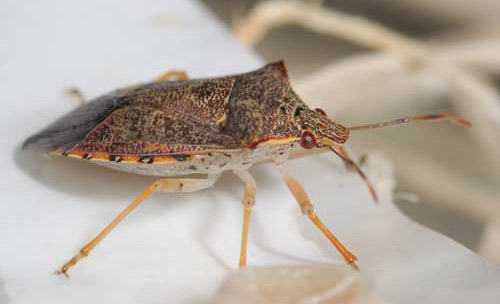Radishes are harbingers of fall. 6 days after the fall equinox, we’re pulled up the first pink beauties! The long sleeves are on more often than not and the task of cleaning the harvest bins has moved later in the day. We have started to dig up a row of sweet potatoes every Monday, they cure for a week in the greenhouse and then move to the bushel baskets for market.
We continue to plant fall crops – kohlrabis, green onions, fennel, radishes and turnips and are beginning to prepare beds for 2014.
Last Friday before (and during) the downpour Ann seeded some of the fall cover crops: austrian winter peas, crimson clover, and cereal rye.
In an undisturbed prairie or forest, organic material is constantly growing, dying, breaking down in the soil and cycling back through again and again. In farming, we disrupt that cycle by taking a sizable portion of the crop away, each time we plant a cash crop, taking those nutrients out of the cycle. Thus the need to fertilize. One of the best, and easiest ways to do that is by cover cropping. We grow a large amount of plant material to reincorporate into the soil.
Cover crops have numerous benefits. They keep the nutrients near the top of the soil, ready for the next crops' use. They anchor the topsoil, avoiding erosion. It provides a feast for pollinators in the spring when the crimson clover and austrian winter peas flower. It crowds out weeds.
We grow the rye to take in any residual nitrogen in the soil. The rye releases allelopathic chemicals that prohibit the growth of certain annual, broad leafed weed seedlings such as lambsquarter and pigweed. We grow crimson clover because it is a legume - it fixes high levels of nitrogen from the air into a form edible to the plants. It will take off in the spring and also produce a habitat for beneficial insects. We grow the austrian winter peas also because it is a legume and it grows very well and produces a lot of biomass. We can also harvest the pea tips in the spring - which are delicious in salads or great in stir fries.
Have a great day,
Natalie and the Sugar Creek Crew
Have a great day,
Natalie and the Sugar Creek Crew
Garlic Joi Choi from about.com
Yield: Serves 3 to 4
Ingredients:
1 1/2 tablespoons vegetable oil (canola is good) or peanut oil, for stir-frying
2 teaspoons minced garlic
1 pound bok choy, stalks cut diagonally and leaves cut across in 1 - 1 1/2 inch pieces
Pinch of red pepper flakes, chili paste or chili powder (optional)
1 tablespoon light soy sauce
1/2 teaspoon sugar
Salt to taste (I used less than 1/4 teaspoon)
1/4 cup water or chicken broth
Asian Sesame oil, to taste (I used 1/2 teaspoon)
Freshly ground black or white pepper, to taste
Preparation:
Heat wok and add oil. When oil is ready, add garlic and chili paste, chili powder or red pepper flakes if using and stir-fry briefly, for about 30 seconds, until the garlic is aromatic. Add the bok choy, adding the stalks first, and then the leaves. Stir in the soy sauce, sugar, and salt, and stir-fry on high heat for 1 minute.
Add the water or chicken broth, cover the wok and simmer for about 2 - 3 minutes, until the leaves are dark green and the stalks are tender but not too soft.
sweet potato pie! from allrecipes.com
NGREDIENTS:
1 (1 pound) sweet potato
1/2 cup butter, softened
1 cup white sugar
1/2 cup milk
2 eggs
1/2 teaspoon ground nutmeg
1/2 teaspoon ground cinnamon
1 teaspoon vanilla extract
1 (9 inch) unbaked pie crust
DIRECTIONS:
1. Boil sweet potato whole in skin for 40 to 50 minutes, or until done. Run cold water over the sweet potato, and remove the skin.
2. Break apart sweet potato in a bowl. Add butter, and mix well with mixer. Stir in sugar, milk, eggs, nutmeg, cinnamon and vanilla. Beat on medium speed until mixture is smooth. Pour filling into an unbaked pie crust.
3. Bake at 350 degrees F (175 degrees C) for 55 to 60 minutes, or until knife inserted in center comes out clean. Pie will puff up like a souffle, and then will sink down as it cools.




